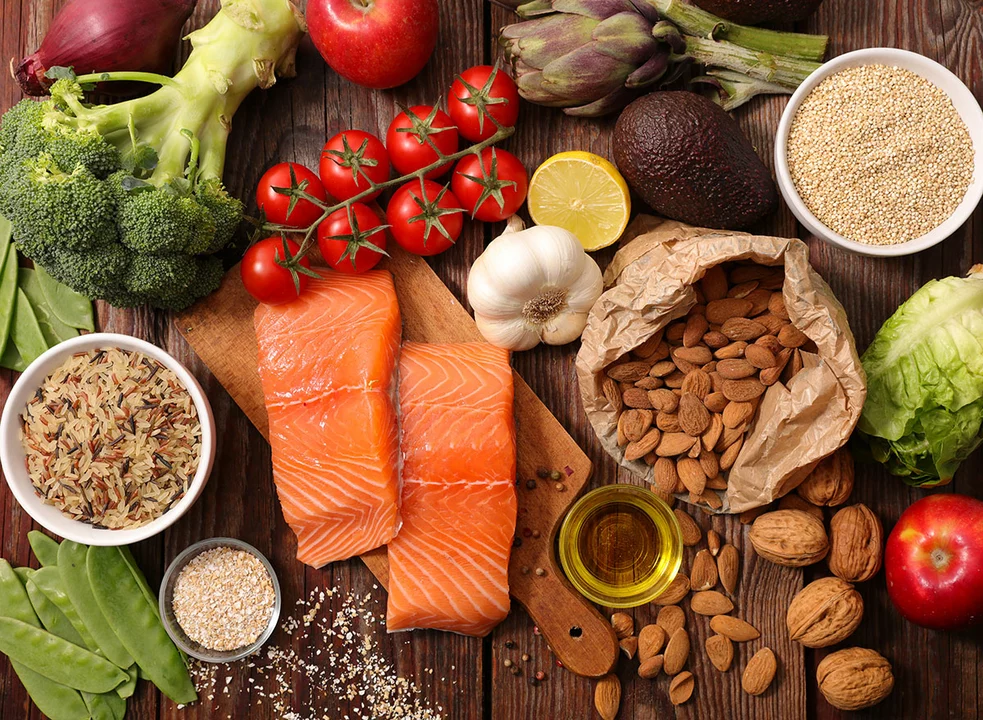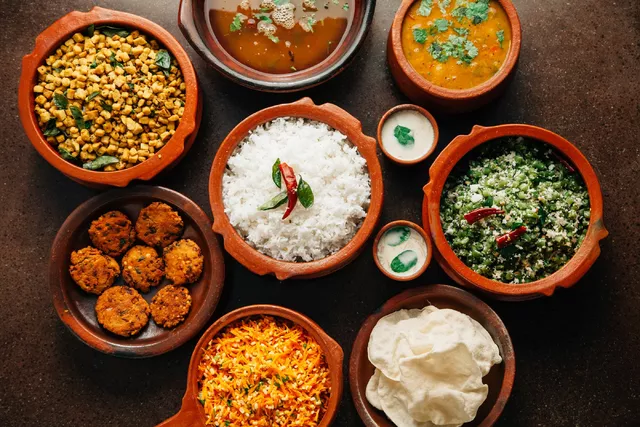Introduction: The Dark Side of Indian Cuisine
Indian cuisine is known for its delicious and diverse range of dishes, rich in flavors and spices. But like any other cuisine, it has its fair share of unhealthy dishes that can be detrimental to our health if consumed frequently. In this article, we will explore the most unhealthy Indian foods that you should be cautious about, along with their health risks and some tips on how to make them healthier. So let's dive into the dark side of Indian cuisine and learn how to enjoy it without compromising our health.
1. Samosas: The Deep-Fried Delight
Who doesn't love a crispy, golden samosa filled with a savory mixture of potatoes, peas, and spices? Unfortunately, these delicious snacks are one of the most unhealthy Indian foods due to their deep-fried nature. Deep frying not only adds a significant amount of calories, but it also increases the levels of unhealthy fats, such as saturated and trans fats. These can contribute to weight gain, high cholesterol, and an increased risk of heart diseases.
To enjoy samosas in a healthier way, you can opt for baking or air-frying them instead of deep-frying. This will reduce the unhealthy fat content, while still providing that satisfying crunch.
2. Butter Chicken: A Creamy Calorie Bomb
Butter chicken, also known as Murgh Makhani, is a popular dish that consists of tender chicken pieces cooked in a rich and creamy tomato-based sauce. The deliciousness of this dish comes at a cost though, as it is packed with calories and saturated fat due to the generous use of butter, cream, and ghee. Excessive consumption of butter chicken can lead to weight gain, increased cholesterol levels, and a higher risk of heart diseases.
To make butter chicken healthier, consider using low-fat dairy products, such as yogurt or milk, instead of cream. You can also reduce the amount of butter and ghee used in the recipe and use healthier cooking oils, like olive oil.
3. Kachoris: A Deceptive Snack
Kachoris are another deep-fried Indian snack that can be quite unhealthy. These round, flaky pastries are filled with a variety of ingredients, such as lentils, onions, or spicy potatoes. Similar to samosas, kachoris are high in calories and unhealthy fats due to the deep-frying process. Regular consumption of kachoris can contribute to weight gain, high cholesterol, and an increased risk of developing heart diseases.
For a healthier alternative, consider baking or air-frying kachoris instead of deep-frying them. You can also try using whole wheat flour for the dough and filling them with healthier ingredients, like vegetables.
4. Pakoras: A Tasty Temptation
Pakoras are another deep-fried Indian snack that is difficult to resist. Made from a variety of vegetables, such as onions, potatoes, or spinach, coated in a spiced gram flour batter and deep-fried, pakoras are high in calories and unhealthy fats. Consuming pakoras frequently can lead to weight gain and an increased risk of heart diseases due to the high levels of saturated and trans fats.
To make pakoras healthier, you can bake or air-fry them instead of deep-frying. You can also use whole wheat flour in the batter and include more vegetables in the mix.
5. Paneer Tikka: A Deceptive Vegetarian Option
Paneer tikka, a popular vegetarian dish, consists of marinated paneer (Indian cottage cheese) and vegetables, grilled or baked to perfection. While this dish seems like a healthier alternative to deep-fried snacks, it can be quite high in calories and saturated fat due to the generous use of oil, ghee, or butter in the marinade. Consuming paneer tikka frequently can contribute to weight gain and increased cholesterol levels.
To make paneer tikka healthier, try using a minimal amount of oil or ghee in the marinade and opt for grilling or baking the dish instead of frying.
6. Biryani: A Flavorful Calorie Overload
Biryani is a delicious and aromatic rice dish, made with layers of spiced meat, vegetables, and fragrant basmati rice, cooked together to create a symphony of flavors. However, the rich and indulgent nature of biryani also makes it high in calories and unhealthy fats, primarily due to the use of oil, ghee, and fatty cuts of meat. Regular consumption of biryani can lead to weight gain and increased cholesterol levels, putting you at risk of heart diseases.
To make biryani healthier, you can reduce the amount of oil or ghee used in the preparation and opt for lean cuts of meat or vegetables. You can also use brown rice instead of white rice for added fiber and nutrients.
7. Naan: A Deceptively Unhealthy Bread
Naan, a soft and fluffy Indian bread, is often enjoyed alongside curries and other Indian dishes. However, naan is made with refined flour and often contains a considerable amount of oil or ghee, making it high in calories and unhealthy fats. Consuming naan regularly can contribute to weight gain and increased cholesterol levels.
For a healthier alternative, you can opt for whole wheat or multigrain bread, such as roti or chapati, which are lower in calories and contain more fiber and nutrients.
8. Chole Bhature: A Delicious but Dangerous Combination
Chole bhature is a popular North Indian dish that consists of spicy chickpea curry (chole) and deep-fried bread (bhature). While chole is relatively healthy due to the high protein and fiber content of chickpeas, the bhature is quite unhealthy due to the deep-frying process and the use of refined flour. Consuming chole bhature regularly can lead to weight gain, high cholesterol, and an increased risk of heart diseases.
To enjoy chole bhature in a healthier way, you can opt for whole wheat or multigrain bread instead of the deep-fried bhature. You can also reduce the amount of oil used in the chole recipe and include more vegetables for added nutrients.
Conclusion: Enjoying Indian Cuisine the Healthy Way
While Indian cuisine has some unhealthy dishes, it also offers a plethora of healthy and flavorful options. The key is to be mindful of portion sizes, cooking methods, and the ingredients used in the dishes. By making small modifications and choosing healthier alternatives, you can still enjoy the rich and diverse flavors of Indian cuisine without compromising your health. So go ahead and indulge in your favorite Indian dishes, but remember to do so in moderation and with a focus on healthier choices.





